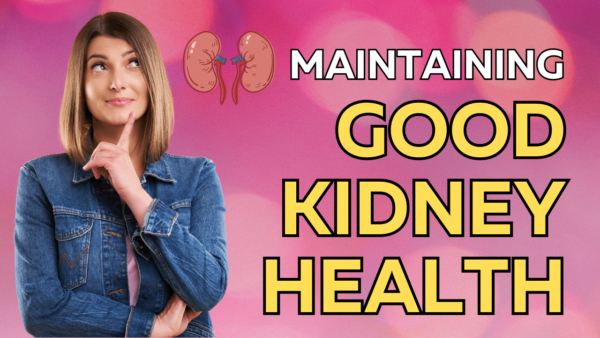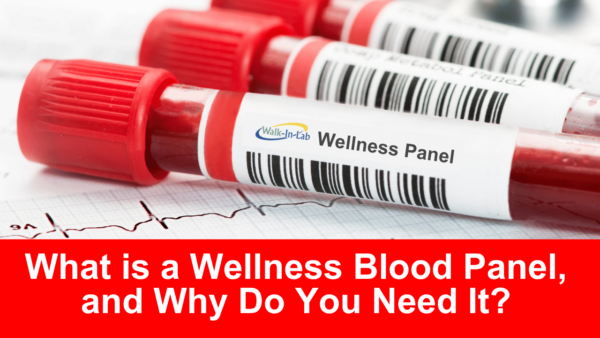Food Allergies are immune system reactions that develop quickly after consuming a specific food. Even a trace amount of an allergy-causing item might cause symptoms such as stomach issues, rashes, or congested airways. A food allergy can induce severe symptoms or even a life-threatening response in some people, which is known as anaphylaxis.
According to the Centers for Disease Control and Prevention, food allergies affect 4% to 6% of children and 4% of adults. Over 50 million Americans are allergic to something. You’ve undoubtedly met or are one of those individuals.
The immune system of the body keeps you healthy by battling infections and other challenges to your health. A food allergy reaction happens when your immune system overreacts to a food or an ingredient in a food, perceiving it as a threat and activating a protective response.
While allergies seem to run in families, it is difficult to know whether a kid will inherit a parent’s food allergy or whether siblings will be affected in the same way. A food allergy is easily confused with a much more frequent reaction known as food intolerance. Food intolerance, while bothersome, is a less dangerous condition that does not affect the immune system.
Symptoms Of Food Allergy
According to Hopkins, Symptoms can range from moderate to severe, and each person is affected differently. Not everyone will experience all of the probable symptoms, and each response will be unique. However, common signs and symptoms include:
- Tingling in the mouth
- A burning feeling in the lips and mouth
- Nausea, vomiting, or diarrhea
- Facial swelling
- A hive-like skin rash
- A runny nose and
- Watery eyes
Symptoms Of Anaphylaxis
Anaphylaxis is the most severe allergic reaction, a potentially fatal whole-body allergic response that can compromise your breathing, produce a sudden drop in your blood pressure, and change your heart rate. Anaphylaxis can occur within minutes of being exposed to the trigger food. It is potentially deadly and must be treated immediately with an epinephrine injection (adrenaline).
The signs and symptoms usually appear fast and worsen. They may include:
- A rapid drop in blood pressure
- Fear or apprehension
- An itchy tickly throat
- Sneezing
- Nausea
- A fast heartbeat, known as tachycardia
- Vomiting
- Loss of consciousness
- Severe swelling of the throat, lips, face, and mouth
- Respiratory issues such as wheezing or shortness of breath, which often get worse over time
- Itchy skin or a rash that spreads quickly and covers much of the body
Common Food Allergies
According to FDA, While any food might induce an allergic reaction, eight foods account for almost 90% of all reactions:
- Eggs:
One of the most common causes of food allergy in children is an egg allergy. It is common to be allergic to egg whites but not yolks, or vice versa. However, because the majority of the proteins that cause an allergy are present in egg whites, an egg white allergy is more common.
- Cow’s Milk:
It is one of the most prevalent childhood allergies, affecting approximately 2-3% of infants and toddlers. However, 90% of children outgrow the disease by the age of three, making it far less common in adulthood.
Cow’s milk allergies can be IgE or non-IgE, although IgE cow milk allergies are the most frequent and potentially the most severe. Children and adults with IgE allergies usually experience a reaction within 5-30 minutes of consuming cow’s milk.
- Shellfish:
A shellfish allergy results from your body targeting the proteins present in the crab and mollusc. Shellfish examples include
- Shrimp And Prawns.
- Crayfish
- Lobster
- Squid
- Scallops
- Fish Allergies:
Fish allergies are frequent, affecting up to 7% of individuals. A fish allergy, like a shellfish allergy, can induce a significant and potentially fatal allergic reaction. The most common symptoms are vomiting and diarrhea, however, anaphylaxis can develop in rare cases.
This means that people who are allergic to fish are frequently given an epinephrine auto-injector to carry with them in case they eat fish by accident.
- Soy:
Proteins in soybeans and soybean products cause a soy allergy. If you have a soy allergy, the only treatment is to avoid eating soy.
- Tree Nuts:
A tree nut allergy is a reaction to some of the nuts and seeds found on trees. People who are sensitive to tree nuts will also be allergic to food products containing these nuts, such as nut butter and oils. They should avoid all sorts of tree nuts, even if they are only allergic to one or two.
- Peanuts:
Peanut allergies, like tree nut allergies, are extremely common and can result in severe and possibly deadly allergic reactions. However, because peanut is a legume, the two conditions are regarded as separate.
- Wheat:
Wheat allergies are caused by an allergic reaction to one of the proteins present in wheat. It primarily affects kids. Children with a wheat allergy, on the other hand, usually outgrow it by the age of ten.
Wheat allergies, like other allergies, can cause digestive discomfort, hives, nausea, rashes, swelling, and, in severe cases, anaphylaxis. It is frequently mistaken for celiac disease and non-celiac gluten sensitivity, both of which can cause similar stomach symptoms.
What You Can Do About Food Allergies?
Once a food allergy has developed, the best method to avoid an allergic reaction is to get familiar with and avoid foods that trigger signs and symptoms. For some, this is just an irritation, while for others, it is a major problem. Moreover, some foods may be well disguised when used as ingredients in particular cuisines. This is especially true in restaurants and other public places.
If You Know You Have A Food Allergy, take the following steps:
- Understand what you’re drinking and eating. Always read food labels thoroughly.
- If you’ve already had a severe attack, wear a medical alert bracelet or necklace that alerts others to your food allergy in case you have an attack and are unable to communicate.
- Consult your doctor about getting emergency epinephrine. Carrying an epinephrine autoinjector may be necessary if you are at risk of having a severe allergic response (Adrenaclick, EpiPen).
- Be cautious at restaurants. Ensure that your waiter or chef is aware that you cannot eat the food to which you are allergic and that the dish you order does not contain it. Also, make certain that food is not prepared on surfaces or in pans that have previously included any of the foods to which you are allergic.
- Don’t be afraid to express your needs. When restaurant workers properly understand your request, they are usually willing to help.
Avoiding the foods that trigger signs and symptoms is the only approach to avoid an allergic response. Despite your best efforts, you may be exposed to a food that triggers an allergic reaction.
For A Mild Allergic Reaction:
Antihistamines, either prescribed or over-the-counter, may help alleviate symptoms. These medications can be taken after being exposed to an allergen-causing food to help reduce itching and hives.
For A Severe Allergic Reaction:
You may require an emergency epinephrine injection and a visit to the emergency department. Many allergy sufferers have an epinephrine autoinjector on hand (Adrenaclick, EpiPen). When placed against your thigh, this instrument introduces a single dose of medication.
Testing For Food Allergy
A food allergy usually results in some form of reaction every time the trigger food is consumed. Symptoms differ from person to person, and you may not always have the same symptoms after each reaction.
While food allergies can occur at any age, they are most common in childhood. If you suspect you have a food allergy, consult an allergist, who will examine your family and medical history, determine which tests to run (if any), and use this information to determine whether or not you have a food allergy.
Allergists ask comprehensive questions about your medical history and symptoms to make a diagnosis. Be prepared to answer questions on your diet, including how much you eat.
- How soon did the symptoms start to show up?
- What symptoms you had, and how long they remained?
After reviewing your medical history, an allergist may recommend a blood test or a skin prick test.
A Blood Test:
A blood test can assess your immune system’s response to specific foods by detecting immunoglobulin E, an allergy-related antibody (IgE).
A sample of blood taken in your doctor’s office is forwarded to a medical laboratory where different foods can be analyzed for this test.
A Skin Prick Test:
A skin prick test can evaluate how you react to a specific food. A little amount of the suspicious food is applied to the skin of your forearm or back. A doctor or other health care professional will then prick your skin with a needle to permit a tiny amount of the chemical to penetrate below your skin’s surface. You get a raised bump or response if you are allergic to the substance being examined.
The findings of these tests will be used by your allergist to make a diagnosis.
Walk-In Lab provides food allergy testing services for various foods. If you suspect that you or any of your family members have an allergy to some food, you can consider booking an appointment with Walk-In Lab. An early diagnosis can help you and your doctor makes a better management plan for you. So, book your appointment with Walk-In Lab today.
References:
- Food Allergy. Retrieved from aaaai.org: https://www.aaaai.org/Conditions-Treatments/Allergies/Food-Allergy
- Food Allergies. Retrieved from cdc.gov: https://www.cdc.gov/healthyschools/foodallergies
- Food Allergies. Retrieved from fda.gov: https://www.fda.gov/food/food-labeling-nutrition/food-allergies
- What Is Food Allergy? Retrieved from hopkinsmedicine.org: https://www.hopkinsmedicine.org/health/conditions-and-diseases/food-allergies
- Food Allergy Tests. Retrieved from walkinlab.com: https://www.walkinlab.com/categories/view/allergy-tests/food

